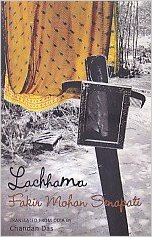In academic circles, all discussion of the In- dian novel as it emerged in the latter half of the 19th century revolves around questions of its adjustment with a ‘derivative’ form, that of the European realist novel. Further, in most such narratives, the points of reference are Bengal and Bankim. Perhaps we need to move beyond these grids and get more interested in the contexts of the early Indian novels’ production as well as their unique local contexts. For Odia writers, the motivation for writing and publication of the novel came from their anxiety over real or imagined threat to their linguistic identity. With the advent of print technology, 19th century Bengal was flushed with modern books in Bangla, a luxury which Odias did not enjoy. From 1866 onward, among others, Fakir Mohan and Gauri Sankar Ray led from the front and with patronage from local rulers tried to ensure that there were good enough books for pedagogic as well as popular reading to stall the rising Bangla book business.
August 2014, volume 38, No 8

